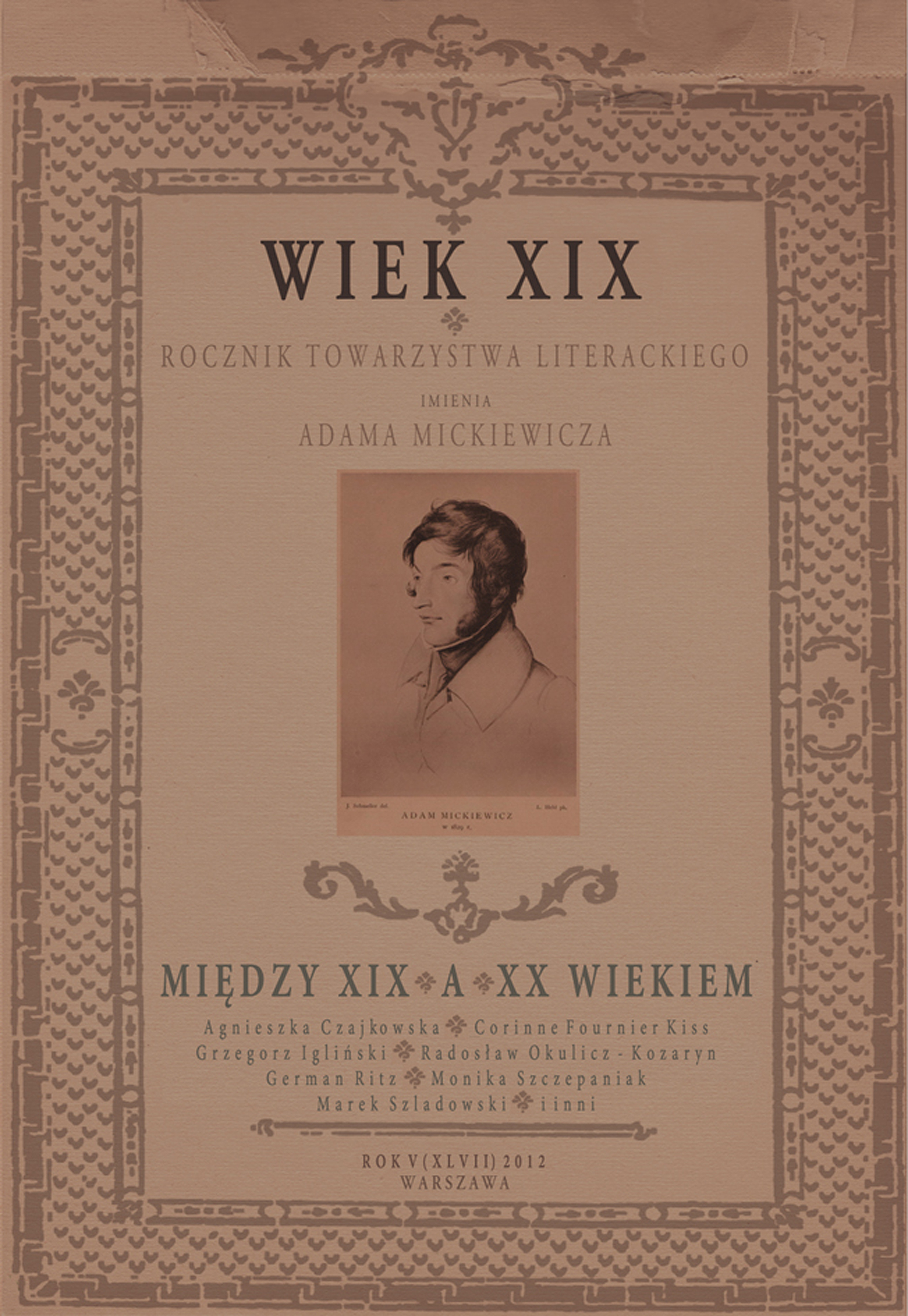Biografia artysty zaklęta w opowieści. O miejscu i roli bajki w „Próchnie” Wacława Berenta
An Artist’s Biography Accursed in a Story. The Place and Role of Fairy Tale in Wacław Berent’s "Próchno"
Author(s): Ewa ChojnackaSubject(s): Language and Literature Studies, Studies of Literature, Polish Literature
Published by: Towarzystwo Literackie im. Adama Mickiewicza
Keywords: Wacław Berent; "Próchno"; fairy tale; art; modernism; desacralisation; decadence
Summary/Abstract: The article focuses on the place and role of fairy tale in literary work, based upon the "Real story of Princess Bratumiła, Niezamyśl the brave knight", and "Saint Yatslav" comprised in Wacław Berent’s novel Próchno [‘Rotten Wood’, 1903]. The analysis extends to genological questions considering the said story on the borderline of genres – legend, fairy tale and, particularly, fable, along with afterthought on the ways of functioning of such a story in the context of ‘aesthetic’ or ‘formalistic’ novel. The fable of a princess and a knight (described using the obsolete Polish word 'witeź') is, following the consideration applied, a prefiguration of the vicissitudes of the character who evokes it. The story appears to be a key to his biography as a decadent artist, and thereby unwittingly becomes part of a diagnosis of the art of the period, which emerges in the light of the entire novel. The emphasis put in the novel on the aspect of concurrence of the Christian tradition and a decadent worldview reflects the process of desacralisation of art, its transfer from the space of the sacred toward the profane, and its being marked by a decadent aestheticism. Within this sphere of problems, the relations of art–sacredness and art–femininity are comprised. A linkage between the message borne by the fairy tale and in the whole novel leads to proving a superiority of the art whose provenance is Divine, against a life-inspired art.
Journal: Wiek XIX. Rocznik Towarzystwa Literackiego im. Adama Mickiewicza
- Issue Year: XLVII/2012
- Issue No: 1
- Page Range: 169-188
- Page Count: 20
- Language: Polish

